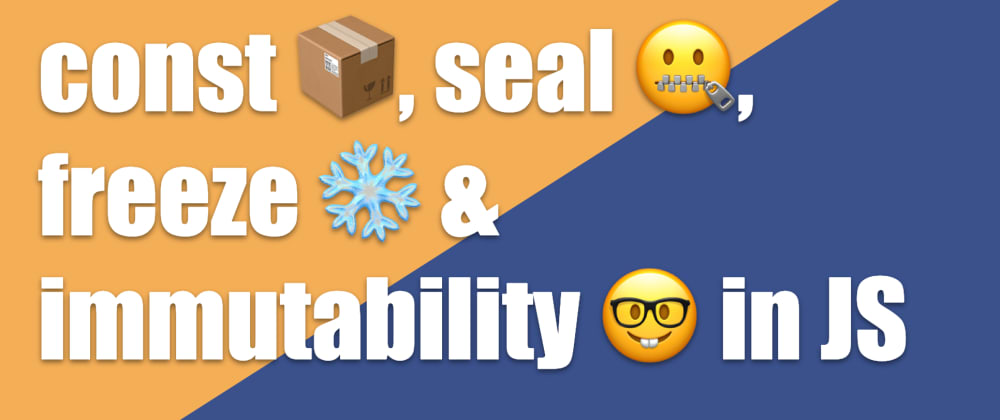Immutable data can not be changed once created. Most of the times this leads to simpler and less error-prone code. That's why immutable data structures are quite often a hot topic. Let's see what we can achieve with JS!
So const for the win you might say, because this way you create constants, right? Well ... no. With const, you create a variable, that can't be reassigned.
So the following code won't work:
const x = "Dog"
x = "Cat" // crashes with "Uncaught TypeError: Assignment to constant variable."
With let and var it's possible to reassign variables, of course.
So, but why isn't const immutable then? Let's see what happens, when we use an object instead of a primitive value.
const obj = { name: "Doggo" }
// let's change a property
obj.name = "Kitty"
// and add one
obj.animal = "cat"
console.log(obj) // {name: "Kitty", animal: "cat"}
// reassigning will not work
obj = { name: "Birdo" } // crashes with "Uncaught TypeError: Assignment to constant variable."
So we can still add and change properties of objects. But there is a seal method and a freeze method on Object, that basically do exactly what they say. Let's have a look at seal first:
const obj = { name: "Doggo" }
// let's seal our object
Object.seal(obj)
// let's change the property again
obj.name = "Kitty"
// and also add one again
obj.animal = "cat"
console.log(obj) // {name: "Kitty"}
So what happened here? The name-property could be changed, but the animal property could not be added. That's exactly what seal does: it prevents properties to be added to an object. Existing properties can still be changed.
The freeze method prevents both, changing as well as adding/deleting properties.
const obj = { name: "Doggo" }
// let's freeze our object
Object.freeze(obj)
// let's change the property again
obj.name = "Kitty"
// and also add one again
obj.animal = "cat"
console.log(obj) // {name: "Doggo"}
Okay, so using const in combination with Object.freeze will give us immutability, right? Well ... again no. The freeze method is no so called deep freeze. This means, that only your first level object is actually frozen; objects within this object aren't. Let's have a look at an example:
// we'll give the dog an owner, that also has a name (mine ;)
const obj = { name: "Doggo", owner: { name: "Ben" } }
// we'll again freeze the object
Object.freeze(obj)
// and this time we'll change the name of the owner
obj.owner.name = "Bla"
console.log(obj) // {name: "Doggo", owner: {name: "Bla"}}
To actually achieve immutability you could create a deep freeze method, to recursivly runs to all object properties and freezes all nested objects. Let me know if you're interested in a tutorial on this!
Or you can use a library like Immutable.js
Want to get better at Web Development?
🚀🚀🚀subscribe to my weekly ✉️newsletter



















